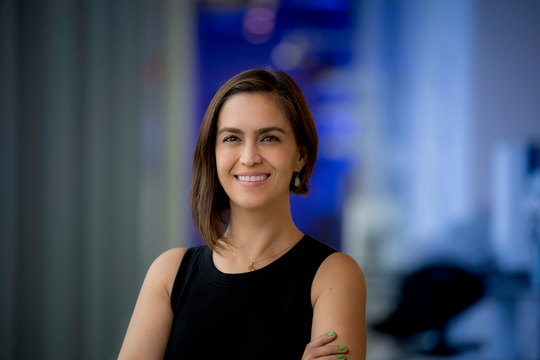Biophysics Alumna Elizabeth Villa Named 2021 HHMI Investigator

Thirty-three new investigators will join the community of Howard Hughes Medical Institute (HHMI) Investigators, including Biophysics and Quantitative Biology alumna Elizabeth Villa.
Elizabeth graduated with a doctoral degree in Biophysics in 2008; her research, which focused on multiscale modeling of biomolecular complexes, was advised by the late Professor Klaus Schulten.
“UIUC is my academic home and where I first became a scientist,” says Professor Villa. “The close-knit biophysics community ensured that I learned about different areas of research and opened my mind to inventing the methods I needed in order to tackle a scientific question.”
“Besides the fantastic mentorship I got from Klaus, many professors were invested in my success and still serve as mentors today. I am a proud alumna of the Biophysics program at UIUC,” she adds.
Dr. Elizabeth Villa is an Associate Professor in the Division of Biological Sciences at the University of California San Diego.
In her lab, she utilizes tools from cell biology, cryo-electron microscopy and tomography, computational analysis, and integrative modeling to visualize macromolecular complexes in their native environment and derive their structure, context, and interaction partners. Along with her research team, she developed a technique called cryo-FIB milling. In this technique, researchers use a focused ion beam to strip frozen cells of ultrathin layers and take images of the sample from various angles using a transmission electron microscope. The two-dimensional images are then grouped using computational tools into a 3-D picture, or tomogram, of cellular structures in their natural environment. This developed method is now being used to explore a wide range of cellular machinery.
In addition to the method development, Dr. Villa’s lab is studying LRRK2, which is the major cause of familial Parkinson’s disease, and was able to determine the first in-situ structure of LRRK2. Her team is currently exploring LRRK2’s function and its role in transporting cellular compounds. It is hoped that LRRK2’ structure would help in designing inhibitors and in understanding the mechanistic details of LRRK2 function.
As a 2021 Howard Hughes Medical Institute (HHMI) Investigator, Dr. Villa and each of the selected scientists, representing 21 US institutions, will receive roughly $9 million over a seven-year term in support of their research.
Published October 14, 2021 15:50